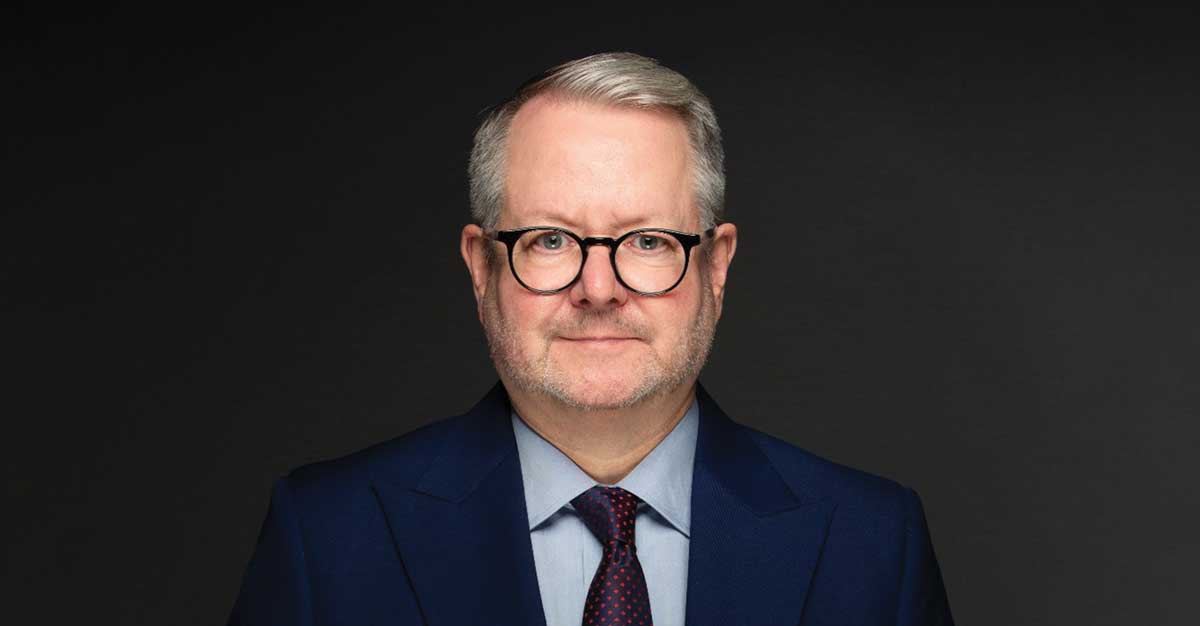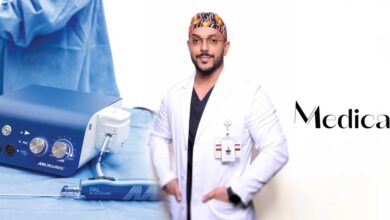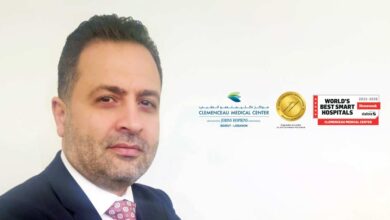Can Migraine Surgery End the Misery of Headache Pain?
Mark Adams, CEO of CMC Hospital Dubai

Migraines are more than just headaches, they are a chronic and often debilitating neurological condition that affects nearly 15% of the global population, with a significant impact on quality of life. While various non-invasive treatments offer temporary relief for some, a large proportion of patients continue to suffer despite medication, alternative therapies, and lifestyle changes. In this exclusive interview with HOSPITALS Magazine, Mark Adams, CEO of CMC Hospital Dubai, sheds light on one of the most promising developments in migraine care: nerve-decompression surgery. Once an accidental discovery during cosmetic procedures, this technique has evolved into a precise and potentially life-changing intervention for chronic migraine sufferers.
Can migraine surgery end the misery of headache pain?
The severe and debilitating effects of migraine attacks can severely impair quality of life. A chronic neurovascular disorder, migraine largely occurs in adults between the ages of 20 and 50. It affects around 15% of the global population, with women suffering disproportionately.
Causing intense headache pain and nausea, as well as hypersensitivity to light or noise, migraines have long been treated with a combination of pain relief and preventative medication. Quick relief is elusive for many sufferers, and where traditional medications have failed, people have often turned to non-traditional methods in a search for pain relief and a long-term cure. Chinese herbal medicine (CHM) has emerged in Western cultures as a viable alternative for some patients, and there is a body of evidence from clinical trials in China that suggests CHM, commonly used to treat migraines in China outside clinical settings, can be an effective short-term and long-term treatment.
But despite the pervading narratives that often champion “non-invasive” treatments, migraine surgery – technically known as nerve-decompression surgery – can provide the relief that many fail to find from alternative therapies. Indeed, it’s estimated that up to one-third of migraine sufferers in the US find no relief at all from existing non-invasive treatments. Elsewhere, the proportion of patients who don’t respond to pharmacologic treatments ranges from 20% to 50%. And whilst there’s a chance that nerve-decompression surgery won’t always provide a long-term cure for the misery of chronic migraines, around 60% to 80% of people who’ve undergone migraine surgery report that, one year on, they experienced no further migraines.
What non-invasive treatments are available?
Short-term prescription or over-the-counter pain relief is the most common treatment for one simple reason: it allows some patients to return to a semblance of normality and enjoy a better quality of life in the short term. But overuse of these medications can, in many cases, cause so-called rebound headaches, leaving sufferers back at square one. CHM can offer temporary or longer-term respite for some sufferers, and clinical trials have shown that patients reported improvements in severity and frequency after taking commonly used herbs fu ling and chuan xiong, as well as herbal formulae such as chuan xiong cha tiao san and yi qi cong ming tang. An array of preventative treatments can be prescribed depending on the frequency, intensity, and nature of a patient’s migraines, as well as the patient’s health profile and comorbidities. For example, simple blood-pressure medication can be effective in some cases, as can antidepressants and anti-seizure drugs. Even Botox injections at 12-week intervals have helped reduce or cure migraines in some patients.
External, drug-free tech devices controlled by smartphones are also available as an alternative to pharmacological treatments. These rely on electrical magnetic stimulation of the nerves to target migraine pain at a patient’s trigger points. Known as neuromodulation, these devices usually cause no side effects. With some targeting prevention and others designed to offer acute relief, there’s little doubt that they offer some sufferers another option to manage migraine pain more effectively.
And in this digital age, it’s probably not surprising that there’s a digital treatment as an adjunct to standard migraine treatments for episodic migraines – fewer than 15 headache days per month – that remaps the brain, based on research that faulty brain circuits are the root cause of many diseases. In short, there’s now an app that can help retrain and rewire the brain by guiding sufferers through a carefully curated set of in-app tasks.
Nerve-decompression surgery: a viable treatment for a permanent cure
Migraine surgery is suitable for candidates already diagnosed with migraines or occipital neuralgia by a neurologist, and for whom alternative therapies either give no relief or cause unbearable side effects. Also commonly referred to as nerve-release surgery, it began life as an accidental by-product of cosmetic-surgery techniques during brow-lift procedures in the US; it transpired that releasing a nerve behind a patient’s eye also gave unexpected relief from migraine pain. To this day, nerve decompression procedures are carried out by qualified cosmetic surgeons rather than neurologists.
Migraine surgery has come a long way since then, with a greater understanding of how compression and irritation of sensory nerves, such as the trigeminal and occipital nerves around a sufferer’s head, can cause migraines and their associated pain. Known as trigger points, surgery can release the compression across a variety of sites where trigger pain is found through the neurolysis of sensory branches of the occipital and trigeminal nerves at temporal and endonasal sites. These principal pain zones are typically located in the back of your head, spreading to behind the eyes (occipital); around the temples (temporal); above the eyes or forehead (frontal) or inside a patient’s nose and behind the eyes (rhinogenic). Of course, patients can often present with more than one trigger point, and such symptoms will dictate how surgery is ultimately conducted.
That surgery involves either an open or endoscopic procedure to decompress and relieve the pressure in nerves and blood vessels at frontal or temporal trigger sites, via an upper-eyelid incision or small, discrete incisions above the hairline. If both sites need simultaneous treatment, based on a patient’s symptoms, a surgeon may choose the same upper-eyelid incision to deal with both sites. The occipital and rhinogenic trigger sites are treated slightly differently, with the former performed via a discrete vertical or horizontal incision across the back of the skull, while the latter is personalised depending on how a cosmetic surgeon assesses individual patients.
Migraine surgery: performance and success
It’s worth mentioning here that candidates for nerve decompression surgery should have a realistic expectation of surgery, as even the most minor of procedures bear a degree of risk that it may not achieve the desired outcome. That said, with debilitating, chronic life-changing pain, the risk-reward equation will often favour intervention, and evidence from a wide array of clinical studies carried out over more than 20 years suggests success rates for complete and permanent elimination of migraine symptoms can be as high as 80%. In short, there’s cause for cautious optimism.
And whilst the obvious corollary to that success rate is the fact that one-fifth of patients undergoing surgery see no lasting difference at all, research has found that the most likely causes of failure in migraine surgery stem not from a patient’s suitability for surgery or otherwise, but rather from an inability to accurately determine the migraine trigger sites. As one recent paper on the efficacy of trigger-site surgery published in the US National Library of Medicine notes, “the most common reason for a partial clinical response is the failure to identify all trigger sites or inadequate surgery on the trigger sites.” That, or when pain in one site is so acute, it masks symptoms at another.
No more pain
Surgical intervention for migraines has emerged as a viable treatment option for patients with a clinical diagnosis of neuralgia, and for whom pain relief and preventative pharmacological treatment are ineffective or, worse still, cause undesirable side effects. With most procedures completed on an outpatient basis in just a few hours, the vast majority of patients who choose surgical intervention as a long-term cure for migraine pain will see either immediate results or will experience a gradual but inexorable improvement during their recovery. As far as anti-migraine options go, surgery is the one that can realistically be considered a potential cure rather than a temporary respite.














